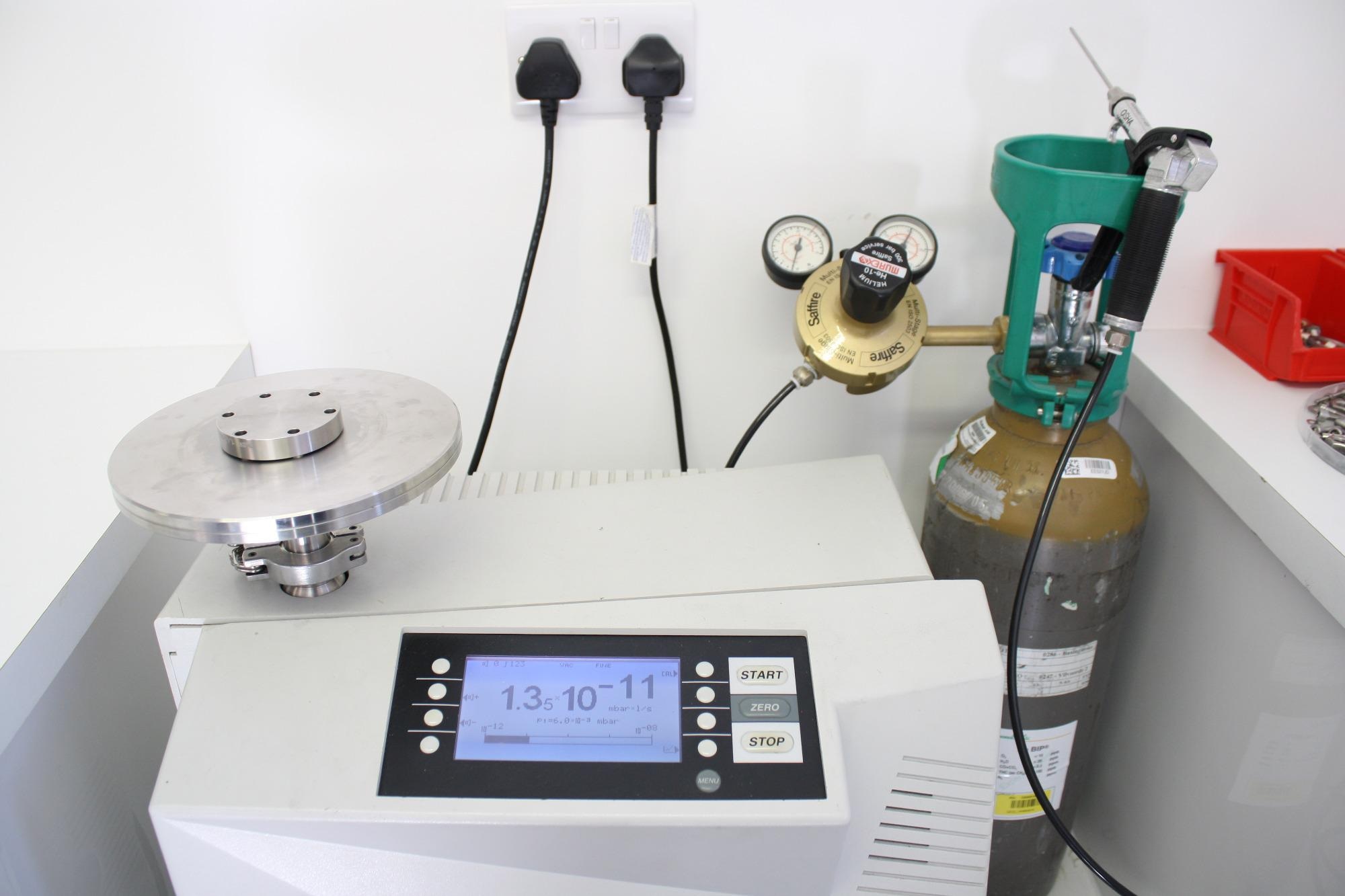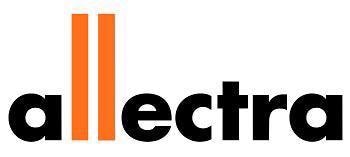To understand the challenges associated with achieving and working with high vacuum (HV) and ultra-high vacuum (UHV) you need to examine the differences (at a molecular level) between the various vacuum levels.
The pressure range of UHV is between 10-7 mbar and 10-12 mbar (10-5 Pa to 10-10 Pa) and HV between 10-7 mbar and 10-3 mbar (10-5 Pa to 10-1Pa). UHV is associated with high-energy physics and nuclear research, such as that being conducted at CERN, and HV mainly for industrial and research applications.
The established norms, rules and protocols that define and govern vacuum factors and matters, from how to obtain such vacuum levels, the pump set-up, safeguards, measurement methods, as well as leak detection, must all be thoroughly re-examined and frequently re-engineered.
We have curated some notes on today's high vacuum and UHV practice:

Image credit: Allectra
Vacuum Levels
Rough Vacuum
From atmospheric pressure to 1 mbar. (105 Pa to 100 Pa)
Medium Vacuum
1 mbar to 10-3 mbar. (100 Pa to 0.1 Pa)
This pressure regime can be obtained with the use of Roughing Pumps only.
High Vacuum
From 10-3 mbar to 10-7 mbar. (0.1 Pa to 10-5 Pa)
Additional pumping is required from for example; Diffusion pump, Turbo pump or Cryo pump.
Ultra High Vacuum (UHV)
Below 10-7 mbar. (below 10-5 Pa)
UHV needs special pumps and bakeout of system to reduce outgassing.
Bakeout of Vacuum Systems
To ensure that surfaces in vacuum are free of absorbed gas (especially water vapour), the entire vacuum system including any attached instruments must be baked in an oven. Typical bakeout temperature for a stainless-steel system pumped with turbo molecular pumps is 200ºC.
For an Aluminium chamber this temperature can be much lower because AI is a good conductor of heat while Stainless Steel is poor.
Pumping Speed and Conductance
Pumping speed and conductance are measured in litres/sec. Typical value of pumping speed for Turbo-molecular pumps is between 100 and 5000 litres/sec.
If a pump is connected via a low conductance narrow tube, the obtained pumping speed will be the conductance of the narrow tube irrespective of the size of the pump.
Leak Detection
It is very important that components and chambers for use in High Vacuum or UHV are free of leaks. Vacuum components and chambers are tested after manufacture with a Leak Detector.
The Leak Detector consists of a Mass Spectrometer. This is an instrument which can measure the presence of particular molecules. The instrument is tuned to detect Helium molecules. Helium is a colourless, non-toxic gas which can pass through very small apertures. It is squirted from a gas bottle onto the outside of a vacuum component. The Leak Detector measures the rate of flow of Helium gas arriving at its sensor.
The leak rate is expressed in units of volume of gas per second, mbar-litres per second (mbar-l/s).
Allectra High Vacuum components are specified to have a leak rate of less than 10-9 mbar-l/sec while UHV components are better than 5 x 10-10 mbar-l/sec.

Image credit: Allectra
Ultimate (Base) Pressure
Ultimate Pressure of a pumped vacuum vessel depends on the outgassing rate (Q) and the pumping speed (P) assuming there are no leaks.
Base pressure = Q/P
Outgassing rates of common materials:
Approximate outgassing rates to use when selecting vacuum materials or calculating gas loads (All rates are for 1 hour of pumping).
Table 1. Source: Allectra Limited.
| Vacuum Material |
Outgassing Rate (torr litre/sec/linear cm |
| Aluminum |
7 x 10-9 |
| Mild Steel |
5 x 10-6 |
| Brass |
4 x 10-6 |
| High Density Ceramic |
3 x 10-9 |
| Pyrex |
8 x 10-9 |
| Viton (Unbaked) |
8 x 10-7 |
| Viton (Baked) |
4 x 10-8 |
| Stainless Steel |
6 x 10-9 |
Baking typically reduces Q by a factor of 100 for metals and therefore reduces the base pressure by the same amount.
Ultimate (Base) Pressure
Ultimate pressure of a pumped vacuum vessel depends on the outgassing rate (Q) and the pumping speed (P) assuming there are no leaks.
Base pressure = Q/P
Hence it can be seen that Stainless Steel, Aluminium and Ceramic are suitable High Vacuum and UHV materials. Viton can also be used in small quantities. Mild Steel and Brass must be avoided.
Baking typically reduces Q by a factor of 100 for metals and therefore reduces the base pressure by the same amount.
Flanging Systems
CONFLAT also called FC or CF
The Conflat flange was invented and patented by the Varian company around 50 years ago. It consists of a Stainless Steel flange with bolt holes and a knife edge machined profile. Two flanges are bolted together with a copper gasket which sits between the knife edges. The force exerted by the tightening bolts causes the copper to flow and seal any imperfections in the steel knife edges. The gaskets are not re-usable. The seal is all metal (no polymer materials), UHV leak tight and bakeable to 450ºC. The CF flange is now specified by ISO 3669. The flange sizes are as follows:
Table 2. Source: Allectra Limited.
| US name |
Flange OD |
European name |
| 1 ⅓" OD |
34 mm |
DN16CF |
| 2 ¾ " OD |
70 mm |
DN40CF |
| 4" OD |
114 mm |
DN63CF |
| 6" OD |
152 mm |
DN100CF |
| 8" OD |
203 mm |
DN160CF |
| 10" OD |
254 mm |
DN200CF |
N.B
The flange name or DN size does not specify the ID of the flanges, which may be nothing – (blank flange) up to the maximum possible. For further details please refer to the Allectra catalogue. Some other sizes of CF flanges are available including larger ones, but care must be taken as different manufacturers flanges may not be interchangeable. Flanges are usually made from Stainless Steel grade 304 or 304L. Allectra specifies 316L which is a more expensive alloy but with better welding properties.
Klein Flange, KF or Kwik Flange
A widely used simple flange, used with a polymer seal and an external clamp, for High Vacuum applications.
Sizes available
DN10KF
DN16KF
DN40KF
DN63KF – a special version only available from Biallec.
ISO-K
A High Vacuum flange for larger sizes, used with a polymer seal and an external clamp.
DN63ISO-K
DN100ISO-K
DN160ISO-K
DN200ISO-K
DN250ISO-K and larger sizes
ISO-F
A High Vacuum flange for larger sizes, used with a polymer seal and bolt holes.
DN63ISO-F
DN100ISO-F
DN160ISO-F
DN200ISO-F
DN250ISO-F – and larger sizes
There are additionally many custom shapes and special designs of flanges including flat ones which seal with either metal or using an O ring groove.

This information has been sourced, reviewed and adapted from materials provided by Allectra Limited.
For more information on this source, please visit Allectra Limited.